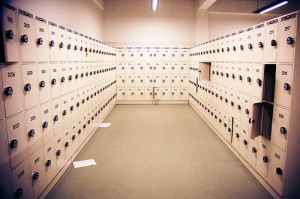 Many historians mark the beginning of organized school sports with a Dallas football game that took place on October 12, 1900. That game was played between the Wall School of Honey Grove against Saint Matthew’s Grammar School at the home turf of Matthew’s, who also won the game 5-0. Until this moment most boys played sports on the fly- taking over an empty field, or alleyway and playing against other equally loosely affiliated groups of students. Needless to say there was much cheating and fighting taking place.
Many historians mark the beginning of organized school sports with a Dallas football game that took place on October 12, 1900. That game was played between the Wall School of Honey Grove against Saint Matthew’s Grammar School at the home turf of Matthew’s, who also won the game 5-0. Until this moment most boys played sports on the fly- taking over an empty field, or alleyway and playing against other equally loosely affiliated groups of students. Needless to say there was much cheating and fighting taking place.
It did not take much for schools to get in the picture. It began with upper-crust private schools, but then wound its way down to the proletariat in the public schools. In order to get the boys away from their classroom desks, in 1903 New York City began its Public School Athletic League. They held a track-and-field festival for 1,000 boys on the day after Christmas in the great Madison Square Garden.
Concurrent with the rise in school organized sports the US was beginning to extend the years of free education for their children, more years than in most other countries. This period also saw a huge rise in the arrival of immigrant population on US shores. The ruling class was afraid that all this “education” would make Anglo-Saxon boys weak and soft, poorly comparable to their strong, athletic, newly arrived peers. The great Oliver Wendell Holmes Senior was afraid that the nation’s cities were being filled with “stiff-jointed, soft-muscled, paste complexioned youth.”
Here is where school sports could save the day. Not only would sports protect the boys’ reputations as strong and masculine; sports had the added bonus of distracting them from the twin vices of gambling and prostitution. The term “Muscular Christianity” was coined during the Victorian era, and recommended engagement in sports as a kind of “moral vaccine” against the upheaval of rapid economic growth.
“In life, as in a foot-ball game,” Theodore Roosevelt wrote in an essay on “The American Boy” in 1900, “the principle to follow is: Hit the line hard; don’t foul and don’t shirk, but hit the line hard!”






